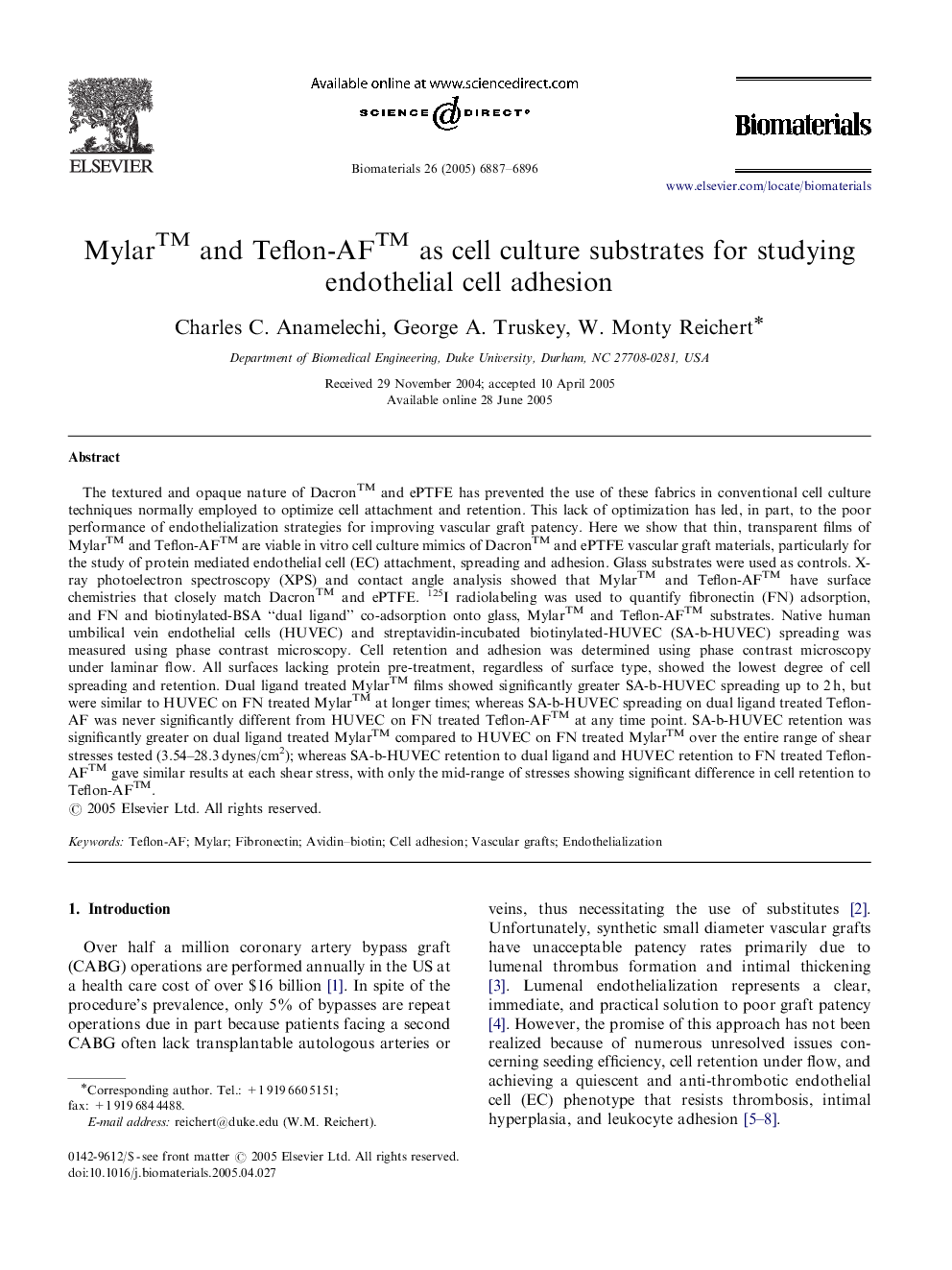| Article ID | Journal | Published Year | Pages | File Type |
|---|---|---|---|---|
| 12446 | Biomaterials | 2005 | 10 Pages |
The textured and opaque nature of Dacron™ and ePTFE has prevented the use of these fabrics in conventional cell culture techniques normally employed to optimize cell attachment and retention. This lack of optimization has led, in part, to the poor performance of endothelialization strategies for improving vascular graft patency. Here we show that thin, transparent films of Mylar™ and Teflon-AF™ are viable in vitro cell culture mimics of Dacron™ and ePTFE vascular graft materials, particularly for the study of protein mediated endothelial cell (EC) attachment, spreading and adhesion. Glass substrates were used as controls. X-ray photoelectron spectroscopy (XPS) and contact angle analysis showed that Mylar™ and Teflon-AF™ have surface chemistries that closely match Dacron™ and ePTFE. 125I radiolabeling was used to quantify fibronectin (FN) adsorption, and FN and biotinylated-BSA “dual ligand” co-adsorption onto glass, Mylar™ and Teflon-AF™ substrates. Native human umbilical vein endothelial cells (HUVEC) and streptavidin-incubated biotinylated-HUVEC (SA-b-HUVEC) spreading was measured using phase contrast microscopy. Cell retention and adhesion was determined using phase contrast microscopy under laminar flow. All surfaces lacking protein pre-treatment, regardless of surface type, showed the lowest degree of cell spreading and retention. Dual ligand treated Mylar™ films showed significantly greater SA-b-HUVEC spreading up to 2 h, but were similar to HUVEC on FN treated Mylar™ at longer times; whereas SA-b-HUVEC spreading on dual ligand treated Teflon-AF was never significantly different from HUVEC on FN treated Teflon-AF™ at any time point. SA-b-HUVEC retention was significantly greater on dual ligand treated Mylar™ compared to HUVEC on FN treated Mylar™ over the entire range of shear stresses tested (3.54–28.3 dynes/cm2); whereas SA-b-HUVEC retention to dual ligand and HUVEC retention to FN treated Teflon-AF™ gave similar results at each shear stress, with only the mid-range of stresses showing significant difference in cell retention to Teflon-AF™.
